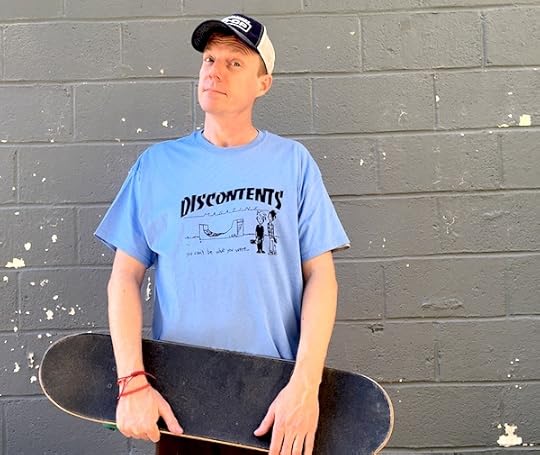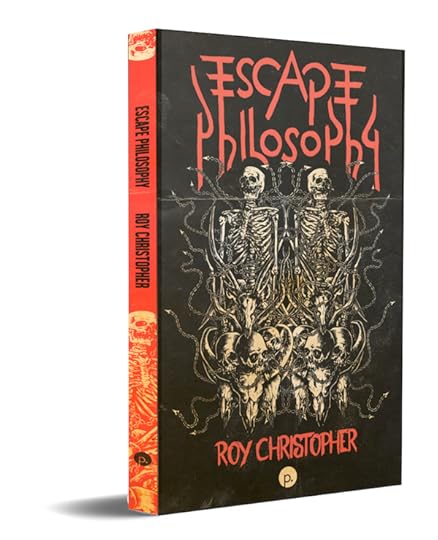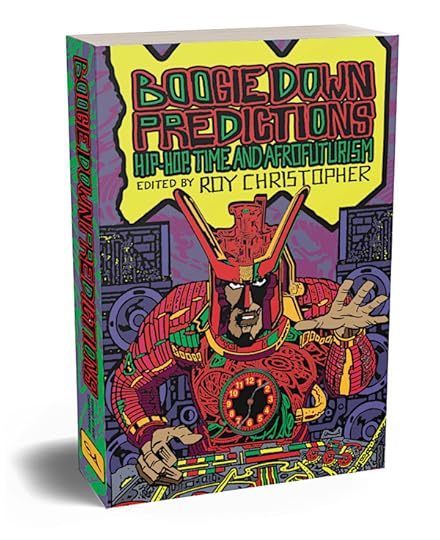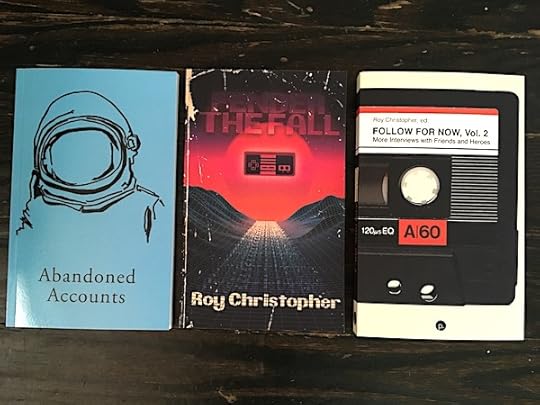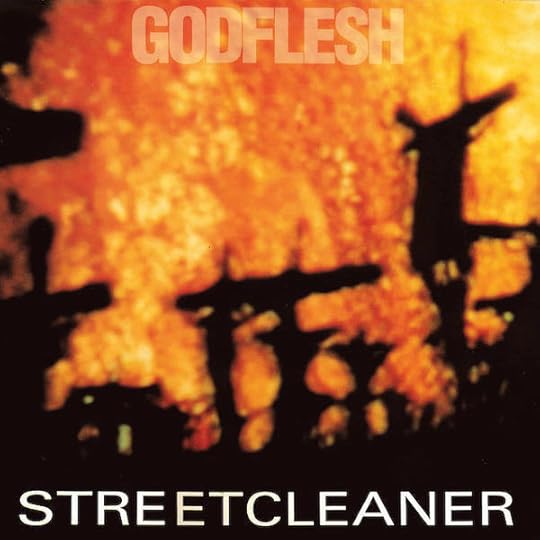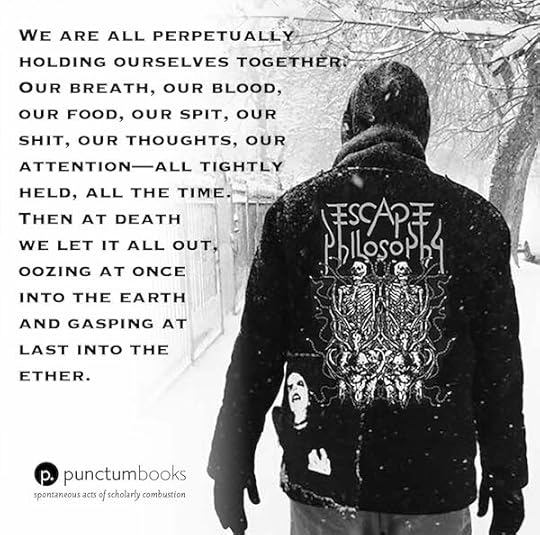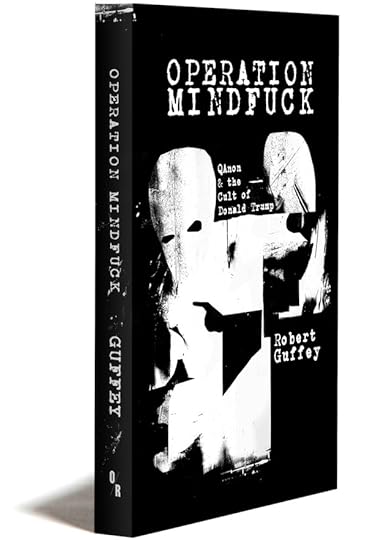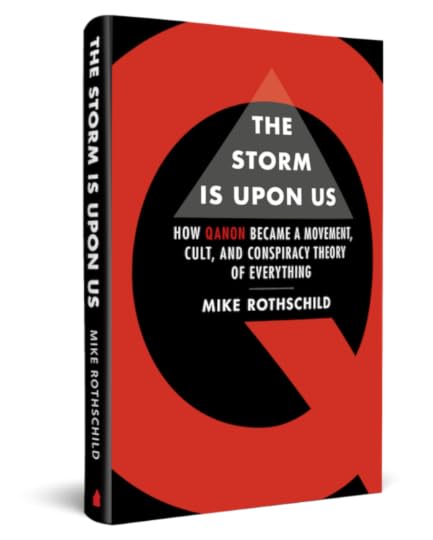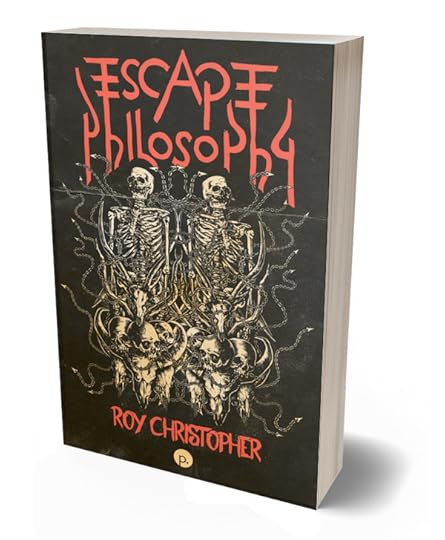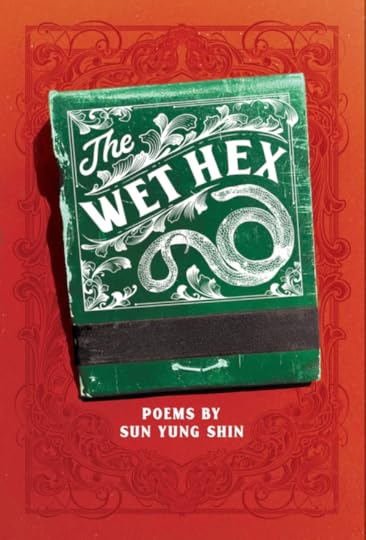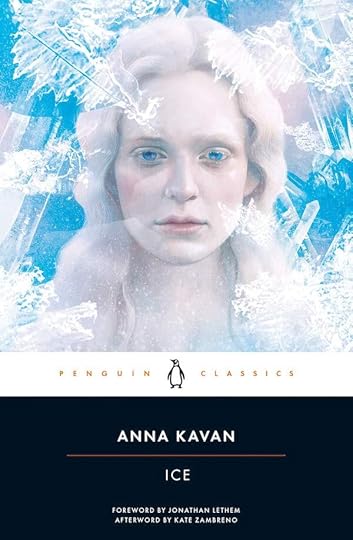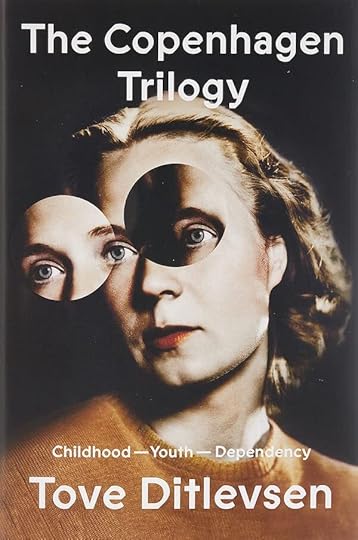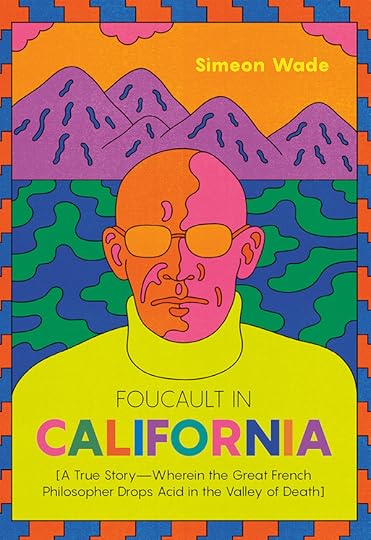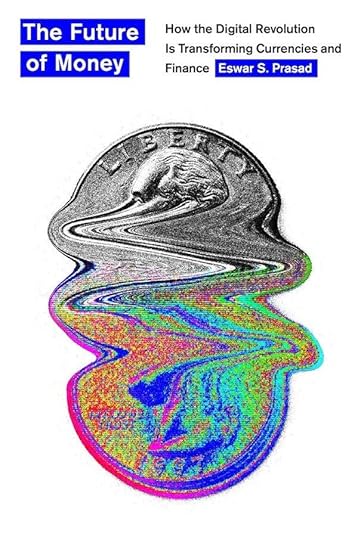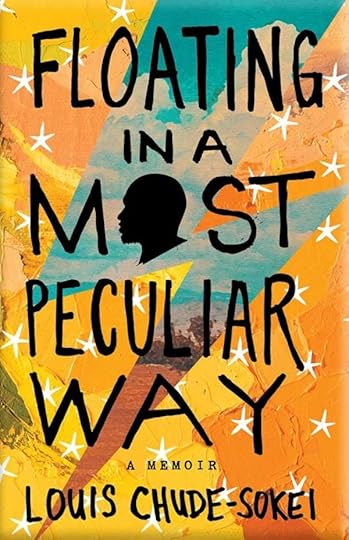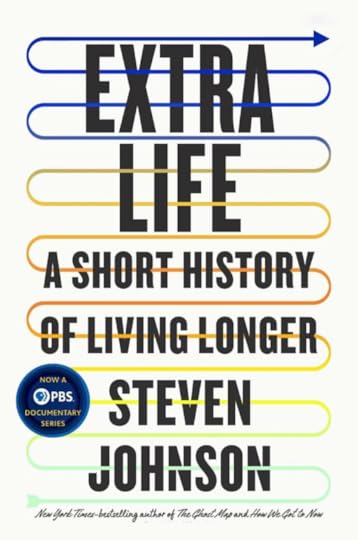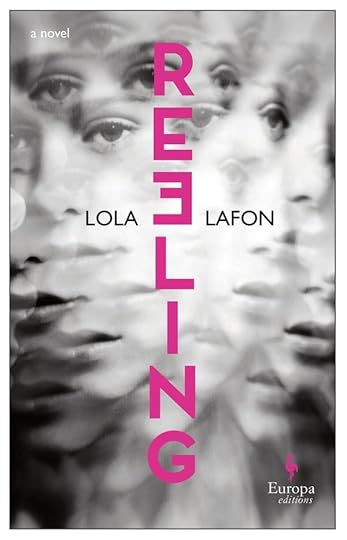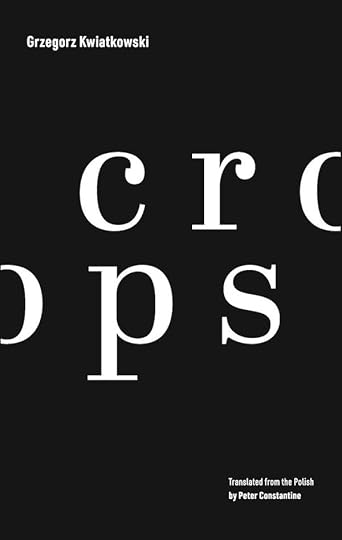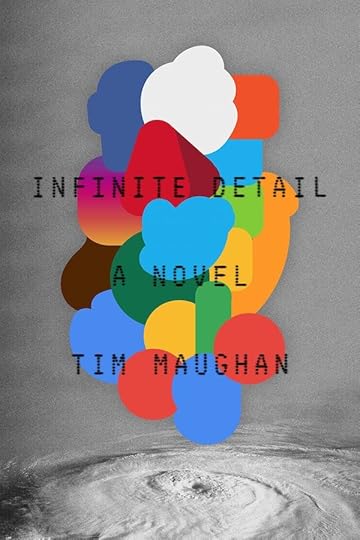Roy Christopher's Blog, page 13
July 27, 2022
Midsummer Updates
What follows is a round-up of my friends' and my current projects, forthright and forthcoming.
But first...Here's a quick clip of me talking to Eiliyas of Mixtape Menage about the impact of Public Enemy's "Rebel Without a Pause," which I first heard on the Plywood Hoods' OG BMX videotape "Dorkin' in York."

If you're unfamiliar, here's the song in question:

Thanks to my man Thomas Durdin (Happy bornday, my dude!) and to Plywood Hood Mark Eaton for the exposure, and to Eiliyas for the chance to talk about it.
Read on!
My friends Patric Barber, Craig Gates, and I have been working on this zine for a while now, and we finally have evidence of our efforts. The pilot issue of discontents is printed and assembled and ready to go out.
This issue features stories on Ceremony, Hsi-Chang Lin a.k.a. Still, and Unwound; interviews with emcee Fatboi Sharif, Coherence director James Ward Byrkit, and Crestone director Marnie Elizabeth Hertzler; pieces by Cynthia Connolly, Spike Jonze, Andy Jenkins, Timothy Baker, Greg Pratt, and Peter Relic; cover art by Tae Won Yu, layouts by Patrick Barber and Craig Gates, and drawings by me, Zak Sally, and Marcellous Lovelace.
It's 50 solid pages of good stuff about good stuff. Get yours!
We also made shirts!
PHANTOM KANGAROO #27
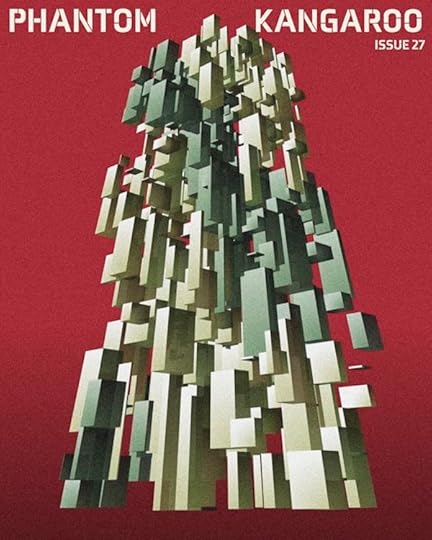
I have a poem called "The Indexical Trace" in the new issue of Phantom Kangaroo, "a portal for inter-dimensional poetry," conceived and edited by the magical mind of Claudia Dawson. You should be following her work however possible.
ESCAPE PHILOSOPHYMy newest book, Escape Philosophy: Journeys Beyond the Human Body, is now available from punctum books!
Many thanks to those of you who helped make it a #1 New Release and a Top-Ten Bestseller in Heavy Metal Music Books on Amazon!
If you haven't gotten one yet, get yourself a beautifully menacing paperback or a FREE open-access .pdf from punctum books.
If you missed it, here's more about the book:
Using extreme examples from heavy metal music and science fiction and horror movies, Escape Philosophy is a survey of all the ways we try to shuck off the shackles of our physical forms.
The physical body has often been seen as a prison, as something to be escaped by any means necessary: technology, mechanization, drugs, sensory deprivation, alien abduction, Rapture, or even death and extinction. Taking in horror movies from David Cronenberg and UFO encounters, metal bands such as Godflesh, ketamine experiments, AI, and cybernetics, Escape Philosophy is an exploration of the ways that human beings have sought to make this escape, to transcend the limits of the human body, to find a way out.
As the physical world continues to crumble at an ever-accelerating rate, and we are faced with a particularly 21st-century kind of dread and dehumanization in the face of climate collapse and a global pandemic, Escape Philosophy asks what this escape from our bodies might look like, and if it is even possible.
“A peculiar hybrid of Thomas Ligotti and Marshall McLuhan.” — Robert Guffey, author of Operation Mindfuck
Here's a brief excerpt from Chapter 3, "Machine," on the Malarkey Books site.
With a cover by Matthew Revert as dark as the ideas inside, it will make you look cool reading it on the bus or displaying it on your bookshelf. Escape Philosophy is the perfect read for our current uncertain moment.
Now you can get yourself a beautifully menacing paperback or an open-access .pdf from punctum books.
BOOGIE DOWN PREDICTIONSA bunch of my friends and colleagues and I have put together a collection of essays called BOOGIE DOWN PREDICTIONS: Hip-Hop, Time, and Afrofuturism. It will finally be out in time for fall classes and back-to-school reading!
“The study of hip-hop requires more than a procession of protagonists, events, and innovations. Boogie Down Predictions stops the clock—each essay within it a frozen moment, an opportunity to look sub-atomically at the forces that drive this culture.”
— Dan Charnas, author of Dilla Time and The Big Payback
Boogie Down Predictions is coming in a few weeks from Strange Attractor Press, and it's available for preorder from the outlet of your choice! Please preorder it if you can! Preorders set in motion all kinds of good stuff for books and their creators.
If you're still not convinced, here are more details, including the table of contents, back-cover blurbs, and a nice review from The Wire Magazine. The list of contributors to this thing includes Omar Akbar, Juice Aleem, Tiffany E. Barber, Kevin Coval, Samantha Dols, Kodwo Eshun, Chuck Galli, Nettrice Gaskins, Jonathan Hay, Jeff Heinzl, Kembrew McLeod, Rasheedah Phillips, Steven Shaviro, Aram Sinnreich, André Sirois, Erik Steinskog, Dave Tompkins, Tia C.M. Tyree, Joël Vascheron, tobias c. van Veen, K. Ceres Wright, and Ytasha Womack.
Preorder your copy now! It's such a monster piece of work we made.
THREE OTHER NEW BOOKS!Also, in case you haven't snagged them yet (what are you waiting for?!), I have three (3!) other new books out:
Follow for Now, Vol. 2: More Interviews with Friends and Heroes (from punctum books)
Fender the Fall (a sci-fi novella from Alien Buddha Press)
Abandoned Accounts (poetry collection from First Cut)
As always, thank you for reading, responding, and sharing.
More soon,
-royc.
July 20, 2022
Exit Tragedy: Introduction to ESCAPE PHILOSOPHY
Here's an Escape Philosophy playlist I put together featuring all of the songs and artists discussed in the book, including Godflesh, Deafheaven, Wolves in the Throne Room, Celtic Frost, and Jawbox, among others.
Play it while you read the Introduction from the book below.
Enjoy!
Exit Tragedy
“Living: a body in search of a corpse.” — Eugene Thacker, Infinite Resignation[1]
“I think human consciousness is a tragic misstep in evolution. We became too self-aware. Nature created an aspect of nature separate from itself. We are creatures that should not exist by natural law. We are things that labor under the illusion of having a self, an accretion of sensory, experience and feeling, programmed with total assurance that we are each somebody, when in fact everybody is nobody. Maybe the honorable thing for our species to do is deny our programming, stop reproducing, walk hand in hand into extinction, one last midnight, brothers and sisters opting out of a raw deal.” — Rustin Cohle, True Detective[2]
“The wonder is not that people continue to create symbolic ritual systems, but that these systems go stale or become perverted, and that people lose belief, often with anxiety, but also with a sense of liberation and relief.” — Charles Leslie[3]
We are all perpetually holding ourselves together. Our breath, our blood, our food, our spit, our shit, our thoughts, our attention—all tightly held, all the time. Then at death, we let it all out, oozing at once into the earth and gasping at last into the ether.
What if we let it slip before then? What if we were able to let ourselves loose and be as free as we can be? What if we got lost somewhere out there beyond ourselves? If it’s all going down, why aren’t we trying to push ourselves as far out as we can? If we try to hold ourselves together as we watch our world fall apart, we’re holding ourselves back for nothing.

If this sounds like despair, it probably should. The more we realize about our place in the world, the worse that place seems to get. Much has been written about the mainstreaming of pessimism as a philosophy, thanks especially to Rustin Cohle (played by Matthew McConaughey) in season one of Nic Pizzolatto’s True Detective television series. Echoes of Cohle’s morose monologues, themselves echoes of the writings of Thomas Ligotti, Laird Barron, and E.M. Cioran, among others, can be found throughout this book.[4] Gary J. Shipley writes of the show, “the end has already happened, and all Rustin Cohle and Marty Hart [played by Woody Harrelson] can do is arrange the bodies in a pattern that makes them look less like bodies, more like things that might have existed in bodies, if those bodies hadn’t been born human.”[5] This resignation is evident not only in this show but many others, a malaise seeping into our minds through our media.
The second season of the show continues the gloom of the first. Though, as Ian Bogost points out, where Cohle got lost in his own head, the characters in season two get lost out in the world.[6] The physician and psychoanalyst Dr. John C. Lilly distinguished between what he called “insanity” and “outsanity.” Insanity is “your life inside yourself”; outsanity is the chaos of the world, the cruelty of other people.[7] Dr. Lilly used isolation tanks and psychedelics to explore his mind, leaving his body behind. Sometimes we get lost in our heads. Sometimes we get lost in the world.
As the Earth sustains less and less life, and the life that is left is susceptible to more and more hostile viruses and disease, our physical forms are vulnerable. Growing up under the shadow of the Cold War, the end seemed far away, like a mushroom cloud in the distance. The apocalyptic rhetoric of Y2K, the direct attacks of 9/11, and the Mayan calendar collapse of 2012 all brought eschatology ever closer, to mindsets and media outlets everywhere. Given the hostility of the global climate and the polarity of the political climate, as well as the increasingly frequent mass shootings, it now feels like the end is lurking right outside the door, a killer with a knife at the ready. If we are to protect ourselves, we must move beyond our selves.

One of the many methods used in futures studies is called environmental scanning. “All futurists do environmental scanning,” write Theodore J. Gordon and Jerome C. Glenn, “some are more organized and systematic, all try to distinguish among what is constant, what changes, and what constantly changes.”[8] The process, which includes several distant early warning techniques, from expert panels, literature reviews, internet searches, and conference monitoring, helps inform the pursuits of issues management and strategic planning. According to William Renfro, futurist and president of the Issues Management Association, issues management consists of four stages: identifying potential future issues, researching the background and potential impacts of these issues, evaluating issues competing for a corporation or nation’s operations, and developing appropriate strategies for these operations.[9]
Science fiction stories and horror movies are other places we look to “see” the future. Simulations and speculations are much more fun and much safer than the real things. Spaceships, AI, robots, cyberspace, these all exist in some form in the real world, but the widespread perception of these contrivances comes from fiction. “In the context of SF,” Adam Roberts writes, “this reification works most potently on the interconnected levels of representation of technology and the technologies of reproduction.”[10] At varying levels, we look to science fiction and horror to show us the potential directions technology is going and the ways it will affect our lives. These speculative trajectories show us what’s possible, even if it’s just by showing us what’s not.
The art critic Harold Rosenberg argued that the culture of any society is the debris of past cultures, that any current culture is the fallout of the former, more so than a cohesive system itself.[11] When we describe something as ahead of its time, sometimes that means it took a long time to find an audience, but it could be that it was predicting a possible future. In what follows, we will explore scenarios that may not include living on this planet and some that may not include living at all. In order to explore the space after and beyond ourselves, we will employ ideas and artifacts from heavy metal music to science fiction and horror films: the dark debris of recent systems, the prescient, predictive, and prophetic pieces of the past. One possible escape is found in mechanized sound, starting with the heaviest metal of England.
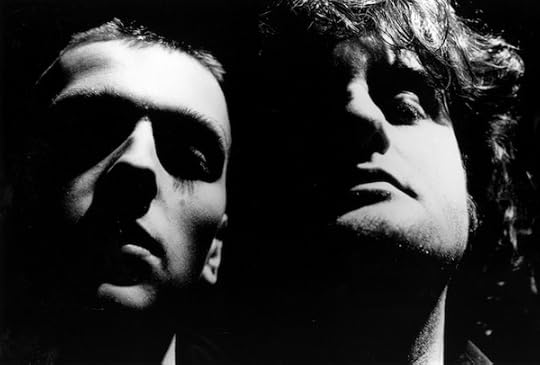
Justin K. Broadrick’s best-known band Godflesh emerged in the late 1980s from the cold concrete of Birmingham, the same oppressive environment that spawned metal pioneers Black Sabbath and Judas Priest. Godflesh’s first full-length record, Streetcleaner, provides an apocalyptic soundtrack to the world from which it came. Streetcleaner plods along at the pace of some giant factory, guitars and bass pummeling to the sound of machines. The overall sound is simply crushing. With the creeping nihilism of nine tons of radioactive sludge, Godflesh grinds and growls through the flaws and floes of humanity. Chapter one establishes the sound of the end and launches us into the remaining themes of this book. Like Godflesh’s music, this book is about the space beyond the bounds of the human body and the end of life itself.
Though the name “Godflesh” carries many connotations, one reading is that the body is all-powerful, a true master no matter the host. “The social body constrains the way the physical body is perceived,” wrote the anthropologist Mary Douglas, “the physical experience of the body, always modified by the social categories through which it is known, sustains a particular view of society. There is a continual exchange of meanings between the two kinds of bodily experience so that each reinforces the categories of the other. As a result of this interaction the body itself is a highly restricted medium of expression."[12] Chapter two delves into such definitions of the body, seeking a broad view, with a watchful eye for a way around these restrictions. Possible escape routes from our corporeal constraints include machines, rapture, drugs, and death. Escape Philosophy includes a chapter on each, concluding with a look at the end of our existence, a glimpse of a future without us.
Turbulent Bloodlines
As cyberculture became culture-at-large, the body anxieties of the original cyberpunks slowly seeped into the everyday. Often viewed as a threat to human livelihood, mechanization promises freedom from our frail bodies. Some imagine a very deliberate merging, postulating an uploading of human consciousness into the contrivances themselves. If we can build a better body and inhabit it instead of this one, why not? From the exosomatic augmentation of automobiles to the command-and-control of computers, chapter three explores the marriage of the human and the machine.
If we can’t live here, perhaps there’s somewhere else out there or some other form we might take. Maybe we’ll get beamed up and away, saved from our own destruction by angels or aliens. “The shedding of our borrowed human bodies may be required in order to take up our new bodies belonging to the next world,” read a Heaven’s Gate poster from 1994. “If you want to leave with us, you must be willing to lose everything of this world in order to have life in the next. Cling to this world and you'll surely die.”[13] In chapter four, we rise with the fallen and take flight with the chosen.
The cover image of Godflesh’s debut album, Streetcleaner, is a shot from Ken Russell’s 1980 movie Altered States. The film follows a scientist attempting to escape his body through his mind, using sensory-deprivation tanks and hallucinogens. It closely parallels the early work of sensory-deprivation and dolphin-intelligence researcher Dr. John C. Lilly. Exploring the extremes of neurophysiology, biophysics, and electronics, Lilly experimented on himself with isolation tanks and ketamine. In chapter five, we take a dose and blast off into inner space.
If life is not an option, then we can escape in death. Serial killers, school shooters, mass murderers, suicide bombers, terrorists, world leaders; if the flesh is their god, they are devoted to destroying it. The last resort of escape from the human body is to snuff out the consciousness inside. Eugene Thacker writes, “there are times when the stupidity of our species is so suffocating that even extinction will not suffice. Then I understand, if only briefly, the other motive for suicide: the need—the desperate need—to be rid of other people."[14]
So, finally, we’re all doomed anyway. Wiping us from this world would relieve all of the tensions of the flesh and bring the ultimate, final brutality. Ghost hunting in a world spent spinning, chapter seven reads humanity its last rites and hangs around after we’re gone, spectral spectators, as if we were able to fulfill the lifelong dream of attending our own funeral.[15]
Let us let go and light out for parts known and unknown, within and without. Let’s escape our bodies, wandering and lost. If the only way out is through, then we’re each already well on our way.
Escape Philosophy: Journeys Beyond the Human Body is now available as a beautifully menacing paperback or a FREE open-access.pdf from punctum books.
If you feel compelled, please do help others find the way out . Thank you!
As always, thank you for reading, responding, and sharing.
More soon,
-royc.
Notes for the excerpt above:
Eugene Thacker, Infinite Resignation (London: Repeater Books, 2018), 128.
Nic Pizzolatto, True Detective (New York: HBO, 2014).
Charles Leslie, Review of The Ritual Process. Structure and Anti-Structure by Victor W. Turner, Science 168, no. 3932 (May 1970): 704.
See Michael Calia, “Writer Nic Pizzolatto on Thomas Ligotti and the Weird Secrets of ‘True Detective’,” Wall Street Journal, February 2, 2014, https://www.wsj.com/articles/BL-SEB-79577. Pizzolatto also mentions John Langan, Simon Strantzas, Robert W. Chambers, and Karl Edward Wagner, as well as Edgar Allan Poe and H.P. Lovecraft, among others.
Gary J. Shipley, “Monster at the End: Pessimism’s Locked Rooms and Impossible Crimes,” in True Detection, eds. Edia Connole, Paul J. Ennis, and Nicola Masciandaro (London: Schism, 2014), 2.
“By contrast, S2 was pure collapse. Nothing mattered or had meaningful effect. Rust got lost in his head. Ray, Frank, Ani: in the world.” @ibogost, Twitter, August 11, 2015.
See David Jay Brown, “From Here to Alterity and Beyond with John C. Lilly,” in Mavericks of the Mind: Conversations for the New Millennium, eds. David Jay Brown and Rebecca McClen Novick (Berkeley: The Crossing Press, 1993), 206.
Jerome C. Glenn and Theodore J. Gordon, Futures Research Methodology, V2.0 (Washington, DC: AC/UNU Millennium Project, 2003), 3.
William L. Renfro, Issues Management in Strategic Planning (Westport: Quorum Books, 1993), 67.
Adam Roberts, Science Fiction: The New Critical Idiom (New York: Routledge, 2006), 113. Roberts adds, “science as simulation is the reason why fictional science, or ‘SF’, is so much more fun to watch than real science.”
See Victor Turner, Dramas, Fields, and Metaphors: Symbolic Action in Human Society (Ithaca: Cornell University Press, 1974), 14.
Mary Douglas, Natural Symbols: Explorations in Cosmology (London: Barrie & Rockliff, 1970), 65. See also Mary Douglas, Implicit Meanings: Essays in Anthropology (London: Routledge & Keegan Paul, 1975).
See "The Shedding of Our Borrowed Human Bodies May Be Required in Order To Take Up Our New Bodies Belonging to the Next World," HeavensGate.com, August 18, 1994, https://heavensgate.com/book/611.htm.
Thacker, Infinite Resignation, 183.
See David Leo Rice, The Overlook Hotel, The Believer, October 31, 2017, https://believermag.com/logger/overlook/.
Exit Tragedy: Introduction to Escape Philosophy
Here's an Escape Philosophy playlist I put together featuring all of the songs and artists discussed in the book, including Godflesh, Deafheaven, Wolves in the Throne Room, Celtic Frost, and Jawbox, among others.
Play it while you read the Introduction from the book below.
Enjoy!
Exit Tragedy
“Living: a body in search of a corpse.” — Eugene Thacker, Infinite Resignation[1]
“I think human consciousness is a tragic misstep in evolution. We became too self-aware. Nature created an aspect of nature separate from itself. We are creatures that should not exist by natural law. We are things that labor under the illusion of having a self, an accretion of sensory, experience and feeling, programmed with total assurance that we are each somebody, when in fact everybody is nobody. Maybe the honorable thing for our species to do is deny our programming, stop reproducing, walk hand in hand into extinction, one last midnight, brothers and sisters opting out of a raw deal.” — Rustin Cohle, True Detective[2]
“The wonder is not that people continue to create symbolic ritual systems, but that these systems go stale or become perverted, and that people lose belief, often with anxiety, but also with a sense of liberation and relief.” — Charles Leslie[3]
We are all perpetually holding ourselves together. Our breath, our blood, our food, our spit, our shit, our thoughts, our attention—all tightly held, all the time. Then at death, we let it all out, oozing at once into the earth and gasping at last into the ether.
What if we let it slip before then? What if we were able to let ourselves loose and be as free as we can be? What if we got lost somewhere out there beyond ourselves? If it’s all going down, why aren’t we trying to push ourselves as far out as we can? If we try to hold ourselves together as we watch our world fall apart, we’re holding ourselves back for nothing.

If this sounds like despair, it probably should. The more we realize about our place in the world, the worse that place seems to get. Much has been written about the mainstreaming of pessimism as a philosophy, thanks especially to Rustin Cohle (played by Matthew McConaughey) in season one of Nic Pizzolatto’s True Detective television series. Echoes of Cohle’s morose monologues, themselves echoes of the writings of Thomas Ligotti, Laird Barron, and E.M. Cioran, among others, can be found throughout this book.[4] Gary J. Shipley writes of the show, “the end has already happened, and all Rustin Cohle and Marty Hart [played by Woody Harrelson] can do is arrange the bodies in a pattern that makes them look less like bodies, more like things that might have existed in bodies, if those bodies hadn’t been born human.”[5] This resignation is evident not only in this show but many others, a malaise seeping into our minds through our media.
The second season of the show continues the gloom of the first. Though, as Ian Bogost points out, where Cohle got lost in his own head, the characters in season two get lost out in the world.[6] The physician and psychoanalyst Dr. John C. Lilly distinguished between what he called “insanity” and “outsanity.” Insanity is “your life inside yourself”; outsanity is the chaos of the world, the cruelty of other people.[7] Dr. Lilly used isolation tanks and psychedelics to explore his mind, leaving his body behind. Sometimes we get lost in our heads. Sometimes we get lost in the world.
As the Earth sustains less and less life, and the life that is left is susceptible to more and more hostile viruses and disease, our physical forms are vulnerable. Growing up under the shadow of the Cold War, the end seemed far away, like a mushroom cloud in the distance. The apocalyptic rhetoric of Y2K, the direct attacks of 9/11, and the Mayan calendar collapse of 2012 all brought eschatology ever closer, to mindsets and media outlets everywhere. Given the hostility of the global climate and the polarity of the political climate, as well as the increasingly frequent mass shootings, it now feels like the end is lurking right outside the door, a killer with a knife at the ready. If we are to protect ourselves, we must move beyond our selves.

One of the many methods used in futures studies is called environmental scanning. “All futurists do environmental scanning,” write Theodore J. Gordon and Jerome C. Glenn, “some are more organized and systematic, all try to distinguish among what is constant, what changes, and what constantly changes.”[8] The process, which includes several distant early warning techniques, from expert panels, literature reviews, internet searches, and conference monitoring, helps inform the pursuits of issues management and strategic planning. According to William Renfro, futurist and president of the Issues Management Association, issues management consists of four stages: identifying potential future issues, researching the background and potential impacts of these issues, evaluating issues competing for a corporation or nation’s operations, and developing appropriate strategies for these operations.[9]
Science fiction stories and horror movies are other places we look to “see” the future. Simulations and speculations are much more fun and much safer than the real things. Spaceships, AI, robots, cyberspace, these all exist in some form in the real world, but the widespread perception of these contrivances comes from fiction. “In the context of SF,” Adam Roberts writes, “this reification works most potently on the interconnected levels of representation of technology and the technologies of reproduction.”[10] At varying levels, we look to science fiction and horror to show us the potential directions technology is going and the ways it will affect our lives. These speculative trajectories show us what’s possible, even if it’s just by showing us what’s not.
The art critic Harold Rosenberg argued that the culture of any society is the debris of past cultures, that any current culture is the fallout of the former, more so than a cohesive system itself.[11] When we describe something as ahead of its time, sometimes that means it took a long time to find an audience, but it could be that it was predicting a possible future. In what follows, we will explore scenarios that may not include living on this planet and some that may not include living at all. In order to explore the space after and beyond ourselves, we will employ ideas and artifacts from heavy metal music to science fiction and horror films: the dark debris of recent systems, the prescient, predictive, and prophetic pieces of the past. One possible escape is found in mechanized sound, starting with the heaviest metal of England.

Justin K. Broadrick’s best-known band Godflesh emerged in the late 1980s from the cold concrete of Birmingham, the same oppressive environment that spawned metal pioneers Black Sabbath and Judas Priest. Godflesh’s first full-length record, Streetcleaner, provides an apocalyptic soundtrack to the world from which it came. Streetcleaner plods along at the pace of some giant factory, guitars and bass pummeling to the sound of machines. The overall sound is simply crushing. With the creeping nihilism of nine tons of radioactive sludge, Godflesh grinds and growls through the flaws and floes of humanity. Chapter one establishes the sound of the end and launches us into the remaining themes of this book. Like Godflesh’s music, this book is about the space beyond the bounds of the human body and the end of life itself.
Though the name “Godflesh” carries many connotations, one reading is that the body is all-powerful, a true master no matter the host. “The social body constrains the way the physical body is perceived,” wrote the anthropologist Mary Douglas, “the physical experience of the body, always modified by the social categories through which it is known, sustains a particular view of society. There is a continual exchange of meanings between the two kinds of bodily experience so that each reinforces the categories of the other. As a result of this interaction the body itself is a highly restricted medium of expression."[12] Chapter two delves into such definitions of the body, seeking a broad view, with a watchful eye for a way around these restrictions. Possible escape routes from our corporeal constraints include machines, rapture, drugs, and death. Escape Philosophy includes a chapter on each, concluding with a look at the end of our existence, a glimpse of a future without us.
Turbulent Bloodlines
As cyberculture became culture-at-large, the body anxieties of the original cyberpunks slowly seeped into the everyday. Often viewed as a threat to human livelihood, mechanization promises freedom from our frail bodies. Some imagine a very deliberate merging, postulating an uploading of human consciousness into the contrivances themselves. If we can build a better body and inhabit it instead of this one, why not? From the exosomatic augmentation of automobiles to the command-and-control of computers, chapter three explores the marriage of the human and the machine.
If we can’t live here, perhaps there’s somewhere else out there or some other form we might take. Maybe we’ll get beamed up and away, saved from our own destruction by angels or aliens. “The shedding of our borrowed human bodies may be required in order to take up our new bodies belonging to the next world,” read a Heaven’s Gate poster from 1994. “If you want to leave with us, you must be willing to lose everything of this world in order to have life in the next. Cling to this world and you'll surely die.”[13] In chapter four, we rise with the fallen and take flight with the chosen.
The cover image of Godflesh’s debut album, Streetcleaner, is a shot from Ken Russell’s 1980 movie Altered States. The film follows a scientist attempting to escape his body through his mind, using sensory-deprivation tanks and hallucinogens. It closely parallels the early work of sensory-deprivation and dolphin-intelligence researcher Dr. John C. Lilly. Exploring the extremes of neurophysiology, biophysics, and electronics, Lilly experimented on himself with isolation tanks and ketamine. In chapter five, we take a dose and blast off into inner space.
If life is not an option, then we can escape in death. Serial killers, school shooters, mass murderers, suicide bombers, terrorists, world leaders; if the flesh is their god, they are devoted to destroying it. The last resort of escape from the human body is to snuff out the consciousness inside. Eugene Thacker writes, “there are times when the stupidity of our species is so suffocating that even extinction will not suffice. Then I understand, if only briefly, the other motive for suicide: the need—the desperate need—to be rid of other people."[14]
So, finally, we’re all doomed anyway. Wiping us from this world would relieve all of the tensions of the flesh and bring the ultimate, final brutality. Ghost hunting in a world spent spinning, chapter seven reads humanity its last rites and hangs around after we’re gone, spectral spectators, as if we were able to fulfill the lifelong dream of attending our own funeral.[15]
Let us let go and light out for parts known and unknown, within and without. Let’s escape our bodies, wandering and lost. If the only way out is through, then we’re each already well on our way.
Escape Philosophy: Journeys Beyond the Human Body is now available as a beautifully menacing paperback or a FREE open-access.pdf from punctum books.
If you feel compelled, please do help others find the way out . Thank you!
As always, thank you for reading, responding, and sharing.
More soon,
-royc.
Notes for the excerpt above:
Eugene Thacker, Infinite Resignation (London: Repeater Books, 2018), 128.
Nic Pizzolatto, True Detective (New York: HBO, 2014).
Charles Leslie, Review of The Ritual Process. Structure and Anti-Structure by Victor W. Turner, Science 168, no. 3932 (May 1970): 704.
See Michael Calia, “Writer Nic Pizzolatto on Thomas Ligotti and the Weird Secrets of ‘True Detective’,” Wall Street Journal, February 2, 2014, https://www.wsj.com/articles/BL-SEB-79577. Pizzolatto also mentions John Langan, Simon Strantzas, Robert W. Chambers, and Karl Edward Wagner, as well as Edgar Allan Poe and H.P. Lovecraft, among others.
Gary J. Shipley, “Monster at the End: Pessimism’s Locked Rooms and Impossible Crimes,” in True Detection, eds. Edia Connole, Paul J. Ennis, and Nicola Masciandaro (London: Schism, 2014), 2.
“By contrast, S2 was pure collapse. Nothing mattered or had meaningful effect. Rust got lost in his head. Ray, Frank, Ani: in the world.” @ibogost, Twitter, August 11, 2015.
See David Jay Brown, “From Here to Alterity and Beyond with John C. Lilly,” in Mavericks of the Mind: Conversations for the New Millennium, eds. David Jay Brown and Rebecca McClen Novick (Berkeley: The Crossing Press, 1993), 206.
Jerome C. Glenn and Theodore J. Gordon, Futures Research Methodology, V2.0 (Washington, DC: AC/UNU Millennium Project, 2003), 3.
William L. Renfro, Issues Management in Strategic Planning (Westport: Quorum Books, 1993), 67.
Adam Roberts, Science Fiction: The New Critical Idiom (New York: Routledge, 2006), 113. Roberts adds, “science as simulation is the reason why fictional science, or ‘SF’, is so much more fun to watch than real science.”
See Victor Turner, Dramas, Fields, and Metaphors: Symbolic Action in Human Society (Ithaca: Cornell University Press, 1974), 14.
Mary Douglas, Natural Symbols: Explorations in Cosmology (London: Barrie & Rockliff, 1970), 65. See also Mary Douglas, Implicit Meanings: Essays in Anthropology (London: Routledge & Keegan Paul, 1975).
See "The Shedding of Our Borrowed Human Bodies May Be Required in Order To Take Up Our New Bodies Belonging to the Next World," HeavensGate.com, August 18, 1994, https://heavensgate.com/book/611.htm.
Thacker, Infinite Resignation, 183.
See David Leo Rice, The Overlook Hotel, The Believer, October 31, 2017, https://believermag.com/logger/overlook/.
July 16, 2022
Fall Schedule
My friends Patric Barber, Craig Gates, and I have been working on launching a zine for a while now. Well we finally have evidence of our efforts. The pilot issue of discontents is printed and ready to go out.
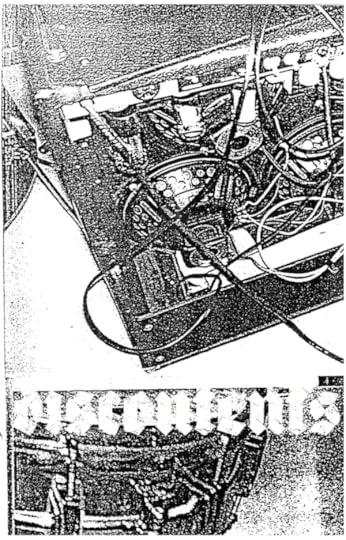
The pilot issue features stories on Ceremony, Hsi-Chang Lin a.k.a. Still, and Unwound; interviews with emcee Fatboi Sharif, Coherence director James Ward Byrkit, and Crestone director Marnie Elizabeth Hertzler; pieces by Cynthia Connolly, Spike Jonze, Andy Jenkins, Timothy Baker, Greg Pratt, and Peter Relic; artwork by Tae Won Yu, Zak Sally, and Marcellous Lovelace.
It's 50 solid pages of good stuff about good stuff.
PHANTOM KANGAROO #27

I have a poem called "The Indexical Trace" in the new issue of Phantom Kangaroo, "a portal for inter-dimensional poetry," conceived and edited by the magical mind of Claudia Dawson. You should be following her work however possible.
ESCAPE PHILOSOPHYMy new book, Escape Philosophy: Journeys Beyond the Human Body, is now available from punctum books!
Many thanks to those of you who helped make it a #1 New Release and a Top-Ten Bestseller in Heavy Metal Music Books on Amazon!
If you haven't gotten one yet, get yourself a beautifully menacing paperback or a FREE open-access .pdf from punctum books.
If you're not convinced, here's more about the book:
Using extreme examples from heavy metal music and science fiction and horror movies, Escape Philosophy is a survey of all the ways we try to shuck off the shackles of our physical forms.
The physical body has often been seen as a prison, as something to be escaped by any means necessary: technology, mechanization, drugs, sensory deprivation, alien abduction, Rapture, or even death and extinction. Taking in horror movies from David Cronenberg and UFO encounters, metal bands such as Godflesh, ketamine experiments, AI, and cybernetics, Escape Philosophy is an exploration of the ways that human beings have sought to make this escape, to transcend the limits of the human body, to find a way out.
As the physical world continues to crumble at an ever-accelerating rate, and we are faced with a particularly 21st-century kind of dread and dehumanization in the face of climate collapse and a global pandemic, Escape Philosophy asks what this escape from our bodies might look like, and if it is even possible.
And here's what some smart folks are saying about the book:
“Too often philosophy gets bogged down in the tedious ‘working-through’ of contingency and finitude. Escape Philosophy takes a different approach, engaging with cultural forms of refusal, denial, and negation in all their glorious ambivalence.” — Eugene Thacker, author of In the Dust of This Planet
“Using Godflesh—the arch-wizards of industrial metal—as a framework for a deep philosophical inspection of the permeable human form reveals that all our critical theory should begin on the street where wasted teen musicians pummel their mind and instruments into culture-shifting fault lines. Godflesh are not just a ‘mirror’ of all the horrors and glories we can inflict on our bodies, but a blasted soundscape of our moans. Roy Christopher’s book is a thought-provoking and delightful crucible of film, music, and the best kind of speculative thought.” — Peter Bebergal, author of Season of the Witch
“A peculiar hybrid of Thomas Ligotti and Marshall McLuhan.” — Robert Guffey, author of Operation Mindfuck
With a cover by Matthew Revert as dark as the ideas inside, it will make you look cool reading it on the bus or displaying it on your bookshelf. Escape Philosophy is the perfect read for our current uncertain moment. Now you can get yourself a beautifully menacing paperback or an open-access .pdf from punctum books.
And here's a brief excerpt from Chapter 3, "Machine," on the Malarkey Books site.
BOOGIE DOWN PREDICTIONSA bunch of my friends and colleagues and I have put together a collection of essays called BOOGIE DOWN PREDICTIONS: Hip-Hop, Time, and Afrofuturism. It will finally be out in time for fall classes and back-to-school reading!
Harry Allen, Hip-Hop Activist and Media Assassin, says,
“How does hip-hop fold, spindle, or mutilate time? In what ways does it treat technology as, merely, a foil? Are its notions of the future tensed…or are they tenseless? For Boogie Down Predictions, Roy Christopher's trenchant anthology, he's assembled a cluster of curious interlocutors. Here, in their hands, the culture has been intently examined, as though studying for microfractures in a fusion reactor. The result may not only be one of the most unique collections on hip-hop yet produced, but, even more, and of maximum value, a novel set of questions.”
Boogie Down Predictions is coming in a few weeks from Strange Attractor, and it's available for preorder from the outlet of your choice! Please preorder it if you can! Preorders set in motion all kinds of good stuff for books and their creators.
If you're still not convinced, here are more details, including the table of contents, back-cover blurbs, and a nice review from The Wire Magazine. The list of contributors to this thing includes Omar Akbar, Juice Aleem, Tiffany E. Barber, Kevin Coval, Samantha Dols, Kodwo Eshun, Chuck Galli, Nettrice Gaskins, Jonathan Hay, Jeff Heinzl, Kembrew McLeod, Rasheedah Phillips, Steven Shaviro, Aram Sinnreich, André Sirois, Erik Steinskog, Dave Tompkins, Tia C.M. Tyree, Joël Vascheron, tobias c. van Veen, K. Ceres Wright, and Ytasha Womack.
Preorder your copy now! It's such a monster piece of work we made.
THREE OTHER NEW BOOKSAlso, in case you haven't snagged them yet, I have three (3!) other new books out:
Follow for Now, Vol. 2: More Interviews with Friends and Heroes (from punctum books)
Fender the Fall (a sci-fi novella from Alien Buddha Press)
Abandoned Accounts (poetry collection from First Cut)
As always, thank you for reading, responding, and sharing.
More soon,
-royc.
July 14, 2022
For Real This Time: ESCAPE PHILOSOPHY is Now Available!
That last newsletter went out earlier than planned and its announcement was premature (Shouts to the troopers among you who found the book on Amazon anyway).
Please read the following as if you didn't already see it. Hey, maybe you didn't!
My new book, Escape Philosophy, really is available now!
I am very excited to announce that my new book, Escape Philosophy: Journeys Beyond the Human Body, is now available from punctum books!
Using extreme examples from heavy metal music and science fiction and horror movies, Escape Philosophy is a survey of all the ways we try to shuck off the shackles of our physical forms.
The physical body has often been seen as a prison, as something to be escaped by any means necessary: technology, mechanization, drugs, sensory deprivation, alien abduction, Rapture, or even death and extinction. Taking in horror movies from David Cronenberg and UFO encounters, metal bands such as Godflesh, ketamine experiments, AI, and cybernetics, Escape Philosophy is an exploration of the ways that human beings have sought to make this escape, to transcend the limits of the human body, to find a way out.
As the physical world continues to crumble at an ever-accelerating rate, and we are faced with a particularly 21st-century kind of dread and dehumanization in the face of climate collapse and a global pandemic, Escape Philosophy asks what this escape from our bodies might look like, and if it is even possible.
Table of Contents:
0. INTRODUCTION: Exit Tragedy
1. GODFLESH: Compound Worlds
2. BODY: The Root of All People
3. MACHINE: Mechanical Reproduction
4. RAPTURE: Through Grace and Time
5. DRUGS: Encounter Culture
6. DEATH: The End of an Error
7. END: Don’t Believe the Hope
And here's what some smart folks are saying about the book:
“Too often philosophy gets bogged down in the tedious ‘working-through’ of contingency and finitude. Escape Philosophy takes a different approach, engaging with cultural forms of refusal, denial, and negation in all their glorious ambivalence.” — Eugene Thacker, author, In the Dust of This Planet
“Using Godflesh—the arch-wizards of industrial metal—as a framework for a deep philosophical inspection of the permeable human form reveals that all our critical theory should begin on the street where wasted teen musicians pummel their mind and instruments into culture-shifting fault lines. Godflesh are not just a ‘mirror’ of all the horrors and glories we can inflict on our bodies, but a blasted soundscape of our moans. Roy Christopher’s book is a thought-provoking and delightful crucible of film, music, and the best kind of speculative thought.” — Peter Bebergal, author, Season of the Witch
“In his trademark breezy yet precise style, Christopher discusses everything from stimoceivers to Southland Tales, everyone from Henry Lee Lucas to Brummbear, and all without ever losing sight of his central points of reference: our all too malleable somatic limits and Godflesh’s Streetcleaner. And the combination here could not be more apposite, for however much we stretch and augment the reaches of our physicality, imagining ourselves the theophanies of some as yet speculative deities, we get no closer to getting away from ourselves, becoming Godly it seems only in the sense of becoming increasingly empty.” — Gary J. Shipley, author, Stratagem of the Corpse
“Through the lenses of Godflesh, J.G. Ballard, UFO phenomena, psychedelics, serial killings, and so much else, Christopher investigates humanity’s growing inclination to escape our bodies, to escape our species, to escape life itself.” ~ B.R. Yeager, author, Negative Space
“A peculiar hybrid of Thomas Ligotti and Marshall McLuhan.” — Robert Guffey, author, Operation Mindfuck
“An interesting read indeed!” — Aaron Weaver, Wolves in the Throne Room
With a cover by Matthew Revert as dark as the ideas inside, it will make you look cool reading it on the bus or displaying it on your bookshelf. Escape Philosophy is the perfect read for our current uncertain moment. Now you can get yourself a beautifully menacing paperback or an open-access .pdf from punctum books.
Here's an Escape Philosophy playlist I put together featuring all of the songs and artists discussed in the book, including Godflesh, Deafheaven, Wolves in the Throne Room, Celtic Frost, and Jawbox, among others.

And here's a brief excerpt from Chapter 3, "Machine," on the Malarkey Books site. I will share more bits of it soon.
If you feel compelled, please do help others find the way out . Thank you!
While you're at it, my other new book, BOOGIE DOWN PREDICTIONS, is available for preorder from the outlet of your choice! It drops on August 16th.
As always, thank you for reading, responding, and sharing.
And apologies again for the early and extra email. I'm really excited about this new book!
More soon,
-royc.
ESCAPE PHILOSOPHY: Journeys Beyond the Human Body
Using extreme examples from heavy metal music and science fiction and horror movies, Escape Philosophy is a survey of all the ways we try to shuck off the shackles of our physical forms.
The physical body has often been seen as a prison, as something to be escaped by any means necessary: technology, mechanization, drugs, sensory deprivation, alien abduction, Rapture, or even death and extinction. Taking in horror movies from David Cronenberg and UFO encounters, metal bands such as Godflesh, ketamine experiments, AI, and cybernetics, Escape Philosophy is an exploration of the ways that human beings have sought to make this escape, to transcend the limits of the human body, to find a way out.
As the physical world continues to crumble at an ever-accelerating rate, and we are faced with a particularly 21st-century kind of dread and dehumanization in the face of climate collapse and a global pandemic, Escape Philosophy asks what this escape from our bodies might look like, and if it is even possible.
Table of Contents:
0. INTRODUCTION: Exit Tragedy
1. GODFLESH: Compound Worlds
2. BODY: The Root of All People
3. MACHINE: Mechanical Reproduction
4. RAPTURE: Through Grace and Time
5. DRUGS: Encounter Culture
6. DEATH: The End of an Error
7. END: Don’t Believe the Hope
And here's what some smart folks are saying about the book:
“Too often philosophy gets bogged down in the tedious ‘working-through’ of contingency and finitude. Escape Philosophy takes a different approach, engaging with cultural forms of refusal, denial, and negation in all their glorious ambivalence.” — Eugene Thacker, author, In the Dust of This Planet
“Using Godflesh—the arch-wizards of industrial metal—as a framework for a deep philosophical inspection of the permeable human form reveals that all our critical theory should begin on the street where wasted teen musicians pummel their mind and instruments into culture-shifting fault lines. Godflesh are not just a ‘mirror’ of all the horrors and glories we can inflict on our bodies, but a blasted soundscape of our moans. Roy Christopher’s book is a thought-provoking and delightful crucible of film, music, and the best kind of speculative thought.” — Peter Bebergal, author, Season of the Witch
“In his trademark breezy yet precise style, Christopher discusses everything from stimoceivers to Southland Tales, everyone from Henry Lee Lucas to Brummbear, and all without ever losing sight of his central points of reference: our all too malleable somatic limits and Godflesh’s Streetcleaner. And the combination here could not be more apposite, for however much we stretch and augment the reaches of our physicality, imagining ourselves the theophanies of some as yet speculative deities, we get no closer to getting away from ourselves, becoming Godly it seems only in the sense of becoming increasingly empty.” — Gary J. Shipley, author, Stratagem of the Corpse
“Through the lenses of Godflesh, J.G. Ballard, UFO phenomena, psychedelics, serial killings, and so much else, Christopher investigates humanity’s growing inclination to escape our bodies, to escape our species, to escape life itself.” ~ B.R. Yeager, author, Negative Space
“A peculiar hybrid of Thomas Ligotti and Marshall McLuhan.” — Robert Guffey, author, Operation Mindfuck
“An interesting read indeed!” — Aaron Weaver, Wolves in the Throne Room
With a cover by Matthew Revert as dark as the ideas inside, it will make you look cool reading it on the bus or displaying it on your bookshelf. Escape Philosophy is the perfect read for our current uncertain moment. Now you can get yourself a beautifully menacing paperback or an open-access .pdf from punctum books.
Here's an Escape Philosophy playlist I put together featuring all of the songs and artists discussed in the book, including Godflesh, Deafheaven, Wolves in the Throne Room, Celtic Frost, and Jawbox, among others.

And here's a brief excerpt from Chapter 3, "Machine," on the Malarkey Books site. I will share more bits of it soon.
If you feel compelled, please do help others find the way out . Thank you!
As always, thank you for reading, responding, and sharing. I'm really excited about this one.
More soon,
-royc.
Escape Philosophy: Journeys Beyond the Human Body
Using extreme examples from heavy metal music and science fiction and horror movies, Escape Philosophy is a survey of all the ways we try to shuck off the shackles of our physical forms.
The physical body has often been seen as a prison, as something to be escaped by any means necessary: technology, mechanization, drugs, sensory deprivation, alien abduction, Rapture, or even death and extinction. Taking in horror movies from David Cronenberg and UFO encounters, metal bands such as Godflesh, ketamine experiments, AI, and cybernetics, Escape Philosophy is an exploration of the ways that human beings have sought to make this escape, to transcend the limits of the human body, to find a way out.
As the physical world continues to crumble at an ever-accelerating rate, and we are faced with a particularly 21st-century kind of dread and dehumanization in the face of climate collapse and a global pandemic, Escape Philosophy asks what this escape from our bodies might look like, and if it is even possible.
Table of Contents:
0. INTRODUCTION: Exit Tragedy
1. GODFLESH: Compound Worlds
2. BODY: The Root of All People
3. MACHINE: Mechanical Reproduction
4. RAPTURE: Through Grace and Time
5. DRUGS: Encounter Culture
6. DEATH: The End of an Error
7. END: Don’t Believe the Hope
And here's what some smart folks are saying about the book:
“Too often philosophy gets bogged down in the tedious ‘working-through’ of contingency and finitude. Escape Philosophy takes a different approach, engaging with cultural forms of refusal, denial, and negation in all their glorious ambivalence.” — Eugene Thacker, author, In the Dust of This Planet
“Using Godflesh—the arch-wizards of industrial metal—as a framework for a deep philosophical inspection of the permeable human form reveals that all our critical theory should begin on the street where wasted teen musicians pummel their mind and instruments into culture-shifting fault lines. Godflesh are not just a ‘mirror’ of all the horrors and glories we can inflict on our bodies, but a blasted soundscape of our moans. Roy Christopher’s book is a thought-provoking and delightful crucible of film, music, and the best kind of speculative thought.” — Peter Bebergal, author, Season of the Witch
“In his trademark breezy yet precise style, Christopher discusses everything from stimoceivers to Southland Tales, everyone from Henry Lee Lucas to Brummbear, and all without ever losing sight of his central points of reference: our all too malleable somatic limits and Godflesh’s Streetcleaner. And the combination here could not be more apposite, for however much we stretch and augment the reaches of our physicality, imagining ourselves the theophanies of some as yet speculative deities, we get no closer to getting away from ourselves, becoming Godly it seems only in the sense of becoming increasingly empty.” — Gary J. Shipley, author, Stratagem of the Corpse
“Through the lenses of Godflesh, J.G. Ballard, UFO phenomena, psychedelics, serial killings, and so much else, Christopher investigates humanity’s growing inclination to escape our bodies, to escape our species, to escape life itself.” ~ B.R. Yeager, author, Negative Space
“A peculiar hybrid of Thomas Ligotti and Marshall McLuhan.” — Robert Guffey, author, Operation Mindfuck
“An interesting read indeed!” — Aaron Weaver, Wolves in the Throne Room
With a cover by Matthew Revert as dark as the ideas inside, it will make you look cool reading it on the bus or displaying it on your bookshelf. Escape Philosophy is the perfect read for our current uncertain moment. Now you can get yourself a beautifully menacing paperback or an open-access .pdf from punctum books.
Here's an Escape Philosophy playlist I put together featuring all of the songs and artists discussed in the book, including Godflesh, Deafheaven, Wolves in the Throne Room, Celtic Frost, and Jawbox, among others.

And here's a brief excerpt from Chapter 3, "Machine," on the Malarkey Books site. I will share more bits of it soon.
If you feel compelled, please do help others find the way out . Thank you!
As always, thank you for reading, responding, and sharing. I'm really excited about this one.
More soon,
-royc.
June 29, 2022
Flowers for QAnon
Whether QAnon is a religion, a cult, a joke, a political movement, or just an online game gone awry, Robert Guffey's Operation Mindfuck: QAnon and the Cult of Donald Trump (O/R Books, 2022) is his attempt to figure it all out. Guffey's pedigree in this area is unmatched. His first book, Cryptoscatology: Conspiracy Theory as Art Form (Trine Day, 2012), explores every conspiracy theory out there. Here's a prescient line from Cryptoscatology: "In the modern day digital environment truth is as malleable as viscous liquid. You can't make up anything that won't come true a few minutes later." Ever since Q emerged online in 2017, he's been trying to figure out the appeal, the movement, and its meaning. His efforts are all chronicled in Operation Mindfuck.
Where cognitive dissonance is the default state of mind, QAnons' frequent refrain of "Do your own research!" echoes that of Behold a Pale Horse author William Cooper. Cooper was viewed as a "P.T. Barnum-style huckster" in UFOlogy and conspiracy circles alike. Guffey quips, "Compared to QAnon, William Cooper was Buckminster Fuller." Tarpley Hitt writes in The Daily Beast, “There’s an aspect of QAnon obsession that resembles demented literary criticism: every current event encoded with hidden meanings, global criminals desperate to signal their crimes through symbols, millions of messages waiting for the right close reader to unpack them.”
Another problem is that there are coded messages in the QAnon mythos. Figuring out which ones are messages and which ones are just junk is open to interpretation. Throughout Operation Mindfuck, Guffey follows Theodore Sturgeon's advice he quoted in his book Chameleo (O/R Books, 2015): "Always ask the next question."
"Before the internet, believing in a conspiracy theory took work," writes Mike Rothschild in The Storm Is Upon Us: How QAnon Became a Movement, Cult, and Conspiracy Theory of Everything (Melville House, 2021). "You had to know which dank bookstore to patronize and which gun show or truck stop was selling the hot new anti-Clinton video, or find the right shortwave radio broadcasts about UN storm trooper invasions." The spread of QAnon benefited not only from the internet in general but also from social media in particular. Couple the high-speed transfer of information to foment fears with the lockdown amid a global pandemic, and you've got the conditions to galvanize a paranoid conspiracy of the worst kind.
Conspiracy theories are spread online through shared texts as their adherents rally around allusions to those texts. The hidden knowledge allows these groups to communicate with each other out in the open without alarming others or stirring up ire or opposition. So-called “dog whistles,” these allusions, often embedded in innocuous memes, are shibboleths shared by members and ignored by others. QAnon has largely shared references to their own rumors and accusations, but other texts like William Luther Pierce’s The Turner Diaries Hunter S. Thompson's Fear and Loathing in Las Vegas, and the Luther Blissett Project’s novel Q are also touchstones.
The phrase "Where we go one we go all" (often displayed as the alphanumeric "WWG1WGA"), falsely attributed to JFK's yacht, was actually inscribed on the bell on the boat from the 1996 Ridley Scott movie White Squall and is spoken by several characters throughout the movie. The noose from January 6th, aside from its regular connotations, is also a reference to the mass hangings of race traitors in The Turner Diaries (see pp. 160-169). Rothchild writes, "The idea of a popular uprising against the government carried out by armed patriots is copied from the seminal 1978 white supremacist novel The Turner Diaries, where it's given the Q-esque name 'the Day of the Rope'." “6MWE,” which stands for “Six Million Weren’t Enough,” an obvious reference to the Holocaust, could also be a reference to the antisemitism in The Turner Diaries, specifically the Jewish response to the Organization destroying their embassy on page 121: “Weren’t six million enough?” On the possible connections between the Q of QAnon and the Q novel, Luther Blissett member Wu Ming 1 says, “Once a novel, or a song, or any work of art is in the world out there, you can’t prevent people from citing it, quoting it, or making references to it.” For better or worse, this is the world of image boards, memes, and movements.
Q "created an alternate universe online where people can cocoon with like-minded believers who swiftly attack opponents, and wave away uncertainty with calls to trust the plan and hold the line," Rothschild writes. “Ultimately, the problem with far-right conspiracies is not that there is a critical mass of people stupid enough to believe them,” adds Tom Whyman, “but that people want to believe them, because reality, such as it is, has come so radically apart from their desires.” And, as Eugene Gallagher writes, “politics in its highest expression becomes identical with religion.” Weaving cryptic messages into a larger tapestry of meanings is one of QAnon's unfortunate strengths and trying to decipher them is one of its adherents unfortunate weaknesses. Drop your Adrenochrome research, and look up apophenia.
Here's one more quotation that reads like a description of QAnon tactics: "It's very, very subtle stuff, changing words and giving them a whole new meaning--it creates an artificial reality. What happens is this new linguistic system undermines your ability to monitor your own thoughts because nothing means what it used to mean." That's from Walter, a former Scientologist. The similarities between QAnon and Scientology are as striking as their differences.
Given better leadership, a little more time, and tax-exempt status, QAnon could've been the next grand scam. Thankfully it doesn't look like any of that is going to happen.
ESCAPE PHILOSOPHY: Journeys Beyond the Human BodyMy new book, Escape Philosophy: Journeys Beyond the Human Body, is coming out soon from punctum books!
[Cover Art by Matthew Revert and me]
Taking in horror movies and science fiction stories, extreme metal, AI and cybernetics, Escape Philosophy is an exploration of the ways that human beings have sought to escape the limits of the human body, to find a way out.
Here's what people are saying about it:
“Too often philosophy gets bogged down in the tedious ‘working-through’ of contingency and finitude. Escape Philosophy takes a different approach, engaging with cultural forms of refusal, denial, and negation in all their glorious ambivalence.” — Eugene Thacker , author, In the Dust of This Planet
“Using Godflesh—the arch-wizards of industrial metal—as a framework for a deep philosophical inspection of the permeable human form reveals that all our critical theory should begin on the street where wasted teen musicians pummel their mind and instruments into culture-shifting fault lines. Godflesh are not just a ‘mirror’ of all the horrors and glories we can inflict on our bodies, but a blasted soundscape of our moans. Roy Christopher’s book is a thought-provoking and delightful crucible of film, music, and the best kind of speculative thought.” — Peter Bebergal , author, Season of the Witch
“A peculiar hybrid of Thomas Ligotti and Marshall McLuhan.” — Robert Guffey , author, Operation Mindfuck
“An interesting read indeed!” — Aaron Weaver, Wolves in the Throne Room
More on this one soon... Hold tight!
BOOGIE DOWN PREDICTIONS is Coming!A bunch of my friends and colleagues and I have put together a collection of essays called BOOGIE DOWN PREDICTIONS: Hip-Hop, Time, and Afrofuturism. It will be out just in time for fall classes and back-to-school reading!
Harry Allen, Hip-Hop Activist and Media Assassin, says,
“How does hip-hop fold, spindle, or mutilate time? In what ways does it treat technology as, merely, a foil? Are its notions of the future tensed…or are they tenseless? For Boogie Down Predictions, Roy Christopher's trenchant anthology, he's assembled a cluster of curious interlocutors. Here, in their hands, the culture has been intently examined, as though studying for microfractures in a fusion reactor. The result may not only be one of the most unique collections on hip-hop yet produced, but, even more, and of maximum value, a novel set of questions.”
[Cover Art by Savage Pencil.]
Boogie Down Predictions is coming this fall from Strange Attractor, and it's available for preorder from the outlet of your choice! Please preorder it if you can! Preorders set in motion all kinds of good stuff for books and their creators.
If you're still not convinced, here are more details, including the table of contents, back-cover blurbs, and a nice review from The Wire Magazine. The list of contributors to this thing includes Omar Akbar, Juice Aleem, Tiffany E. Barber, Kevin Coval, Samantha Dols, Kodwo Eshun, Chuck Galli, Nettrice Gaskins, Jonathan Hay, Jeff Heinzl, Kembrew McLeod, Rasheedah Phillips, Steven Shaviro, Aram Sinnreich, André Sirois, Erik Steinskog, Dave Tompkins, Tia C.M. Tyree, Joël Vascheron, tobias c. van Veen, K. Ceres Wright, and Ytasha Womack.
As always, thank your for reading and responding! You are appreciated.
More soon,
-royc.
June 21, 2022
Summer Reading List, 2022
Starting with...
Summer Reading List, 2022For 20 years I’ve been bugging my literary-minded friends and colleagues about their most anticipated or most loved summer reads and compiling those lists into our annual Summer Reading List. To celebrate two decades of The List, I asked more contributors than ever, and I asked them all to recommend just one book.
This year we have newcomers Claudia Dawson, John Oakes, Tia Ja’nae, Danika Stegeman LeMay, David Leo Rice, Autumn Christian, Erik Steinskog, Peter Relic, HLR, Paul Edwards, Scott Cumming, M. Sayyid, Gary Suarez, and Brian H. Spitzberg, and repeat contributors Cynthia Connolly, Howard Rheingold, Douglas Rushkoff, Steven Shaviro, Paul Levinson, Jussi Parikka, Alex Burns, Steve Jones, Peter Lunenfeld, Joseph Nechvatal, Howard Bloom, and myself, of course.
All of the links in this list (except in the very few cases where they were unavailable) lead to IndieBound, where you can find a copy of the book at your local bookstore or order it online.
Read on!
Danika Stegeman LeMaySun Yung Shin The Wet Hex (Coffee House Press, 2022): Sun Yung Shin’s newest collection of poems, hot off the (Coffee House) press is the ONE BOOK I most recommend and most look forward to voraciously reading this summer. Here are a few samplings, at random, backwards, because how else would I do it?: “travelers, wipe the blood off your shoes / lay low with lambs /” (p. 81), “But are you ready to be well?” (p. 39), “VIOLENCE IS NOT A METAPHOR” (p. 17), “We are water, we are rivers of descent; /gravity is inevitable, yet grievable.” (p. 5). I can only guess at all of the contents of this beckoning, unread book. I suspect, as ever, Shin is an alchemist sublimating a future by unearthing the past and carefully cataloging its elements and etymologies. I suspect, as ever, the poems within the book will be surprising, entirely Shin’s own, and writhing and thriving with life. I hope to be haunted, I hope to bask in a feminist (de)construction through time, I hope to exit the the book’s passages changed.
John OakesW. G. Sebald The Rings of Saturn (New Directions, 1998): My one book that I’m both reading and recommending is W. G. Sebald’s wonderfully gloomy The Rings of Saturn. I seem to go through life bombarded by accusatory cries of “What? You haven’t read. . .” and Sebald’s is a name that frequently comes up in such conversations. I’ve long felt a connection to the man, as for several years I was the custodian of a rickety metal desk chair whose previous owner claimed that the chair’s owner before him was the storied German author, the mention of whose name elicited from me a blank look and the subsequent “What…?” etc. The chair eventually disintegrated into its component pieces, but my guilt at never having read a word of Sebald’s stayed with me and only increased with each subsequent iteration of the exchange. Then I learned that St. Sebald, as I’d come to think of him, had died an untimely death which left him forever younger than I am now by several years, and for some reason that made me panic, and I took the plunge. As I have discovered, Sebald is an excavator of memory in the best humanist tradition, a non-fiction counterpart to Thomas Bernhard, a master of digression and a chronicler extraordinaire of human folly. Sometimes what they tell you about a classic is true.
Claudia DawsonStephan Harding Gaia Alchemy: The Reuniting of Science, Psyche, and Soul (Bear & Company, 2022): Gaia Alchemy is written by a behavioral ecologist as an attempt to integrate intuition and the imaginal with empirical science which is, for the most part, devoid of the Sacred. There’s a deep psychological structure that we all have to tear down in order to re-establish a relationship with our biosphere — a relationship our ancestors tried to hand down to us. I’m only 15% into it, but this book feels really important for me to finish. Depth psychology, alchemical images, and Indigenous wisdom are woven together with modern science to create a new perspective on our interconnectedness with Gaia and the Universe and our souls.
David Leo RiceAnna Kavan Ice (Peter Owen Publishers, 1967/Penguin, 2017): This summer I’m excited to finally read Anna Kavan’s Ice. It’s a book I’ve been hearing about for years, and one that seems to be cropping up in odd and interesting places more and more lately. I recently picked up the Penguin reissue and am excited to delve in. It’s always a particular feeling to read a book that’s been peripherally in your mind for so long — I’m never quite sure why I don’t read such books sooner, I guess I like to let them linger so as to imagine my own versions of them for a while — but it’s a feeling I look forward to in a way that’s slightly different from how I approach brand new books, or truly canonical classics that feel like they’ve been around forever. The undoing of my imagined version of a book like Ice is part of the thrill of reading it.
Cynthia ConnollyAlvin Orloff Disasterama: Adventures in the Queer Underground 1977 to 1997 (Three Rooms Press, 2019): Alvin owns the Castro Street Dog Eared Books in San Francisco (now called Fabulosa Books). I met him while selling my “18 (deckle edged) Postcards of Cones along Highway 1, Big Sur, California” last summer. David Pearl was with me and he pointed out that Alvin wrote a book about his life in SF in the 1980’s. If you want to read about a really fun (and tragic) scene of gay performers and punks living through the changing times of San Francisco in the 1980’s at the advent of the AIDS epidemic you must read this book. I lived in SF in 1986 and this book fills in all the missing pieces for me. Mentioned are some of the gay/punk dance places (for example, “Uranus” at “The End Up”) that I went to when I came back to SF in 1987 and 88. Mentioned is Tribe 8, the zine Homocore, and: From page 143 “..rave-style Outlaw Parties zany parties during which gaggles of youngsters would invade some public place (a BART train, say, or an asphalt nowhere-land under a freeway.) and throw a shin-dig using a portable sound system.” and page 160, “Our club, he declared loftily, wouldn’t be just another hotspot for youthful gadabouts, but an incubator of imagination, a hotbed of subversion, and a haven for the misfits and mutants who move culture forward. We’d provide a venue for underexposed queer artists and promote cross-cultural pollination with unusual pairings: drag queens and punk bands and cabaret singers, performance art, live theater and Spoken Word. And to counteract people’s lamentable tendency to slip into passive observer-dom, we’d promote audience participation by offering games, classes, contests, crafting activities“. What more can you ask for from a book?!??
Steven ShaviroMarguerite Young Miss Macintosh My Darling (Dalkey Archive, 2022): Originally published in 1965, this is the Great American Novel that far too few people have actually read. It’s 1,198 pages long, by turns mesmerizing and hilarious, and filled with ravishing, poetic page-long sentences that follow a meandering dream logic, and yet are filled with incisive, staggering twists and turns. You can easily get lost in the sheer language of it, and yet if you let yourself be hypnotized by Young’s prose, you are liable to miss just how sharp and bitter it is. It moves effortlessly between cosmic and intimate levels, and everything in between. The plot itself is straightforward: the narrator voyages by bus from sophisticated New England and New York to the American heartland of Indiana, and along the way remembers the larger-than-life oddballs and eccentrics who filled her childhood, and who embody in their various ways the American dream or nightmare. It is impossible to give a real sense of this novel without quoting samples of its lavish prose (which I lack the space to do here). I will just say that, in scope and ambition, and also in accomplishment, Miss Macintosh My Darling is as rich and strange as Moby Dick or The Sound and the Fury or Gravity’s Rainbow or Blood Meridian. Indeed it rivals the achievement of such acknowledged modernist masterworks as Proust’s In Search of Lost Time and Joyce’s Ulysses. I fear that I might be making it seem too intimidating with this description; but it is actually less difficult to read than the other books I have mentioned. It is quite welcoming to the reader, and a sheer delight once you have become accustomed to the rhythms of its prose. I actually think it is perfect summer reading. I have read it straight through twice. Both times I started around Memorial Day, and I got to the last page before Labor Day. Those summers, every day I would sit in my favorite cafe, or go to the beach, and slowly devour the book, or let it slowly devour me.
HLRTove Ditlevsen The Copenhagen Trilogy (Picador, 2021): The Copenhagen Trilogy by Tove Ditlevsen is the greatest work of confessional autofiction I’ve ever read. Following a working-class Danish girl who dreams of being a published poet (“Someday I’ll write down all of the words that flow through me. Someday other people will read them in a book and marvel that a girl could be a poet, after all.”), this modern masterpiece is an intense, haunting, unsparing portrayal of protagonist Tove’s attempts to reconcile drug addiction, poverty and depression with her artistic ambitions. The three parts (Childhood, Youth, and Dependency) see Tove struggle through her roles as daughter/wife/ex-wife/mother/writer, and cover challenging topics (self-harm, suicidal ideation, abuse, and abortion to name but a few) with startling eloquence and biting wit. Ditlevsen’s voice is unforgettable: the writing is consistently beautiful, and the content is undeniably disquieting. This compulsively readable text—the work of a troubled genius who was ahead of her time—has no happy denouement, which is perhaps what makes it so affecting. I challenge any reader to not find themselves utterly enthralled by Tove’s desire to live her life on her own terms, and devastated by the tragedies that ultimately befall her.
Howard RheingoldJohn Markoff Whole Earth: The Many Lives of Stewart Brand (Penguin, 2022): Few people have had the broad cultural impact as Stewart Brand. Many know him as creator of the Whole Earth Catalog. He was also a paratrooper, a Merry Prankster, a roadman in the Native American Church, advisor to Governor Jerry Brown, co-founder of The Well, originator of the term “personal computer,” instigator of the Clock of the Long Now. John Markoff (formerly technology reporter for New York Times) has written a readable, incredibly well-researched, and fun biography.
Douglas RushkoffUlrich Beck The Metamorphosis of the World: How Climate Change is Transforming Our Concept of the World (Polity, 2017): It’s not what you think. It’s climate change as a window to a greater shift – a metamorphosis more like a paradigm shift, resulting from runaway capitalism and a host of other obsolete institutions overstaying their welcome. I didn’t realize what sociology could be until I started this book, and it may just pivot my whole trip in a new direction.
Peter LunenfeldSimeon Wade Foucault in California [A True Story—Wherein the Great Philosopher Drops Acid in the Valley of Death] (2019): This summer, I’ll be reading about fuck pads, cat houses, hot sheet motels, porno theaters, model shops, DIY home dungeons, social media collab houses, pool pagodas, casting couches and studio bungalows, all in hopes of understanding Hollywood’s interlocking systems of sex, power and architecture. But as I’m hoping to think as broadly as possible, one of the books I’m most looking forward to is Simeon Wade’s Foucault in California [A True Story—Wherein the Great Philosopher Drops Acid in the Valley of Death]. This volume came out in 2019, two years after the death of its reclusive author, and recounts how in 1975, Wade, then junior faculty at the Claremont Graduate School, invited the visiting bald eminence to North America’s lowest, driest, hottest spot in order to rearrange some neurons. Questions I hope the book answers: Do French theorists quote Heidegger at truck stops? Will LSD reveal Zabriskie Point as a heterotopia? Is there really such a thing as “a true story,” much less one about Michel Foucault?
Tia Ja’NaeTia Ja’nae Ghosts on the Block Never Sleep (Uncle B Publications): Well, I’d recommend this, if for no other reason it was shadow-banned by Amazon and as of April 2022, removed from their stores. A finite number of copies are floating because Amazon allowed it to be bootlegged, so there’s no telling which version people are getting and ergo it’s a collector’s item.
I know ebay and Direct Textbook have it at variable prices.
Synopsis:
Paul Edwards
She’s always been used to dirty work.
A short run career as an industry butcher helped with that. But those times are long in her past. In the present, she still lives with Grams and makes ends meet as a freelance car parts thief for The Arab, the biggest fence on the east side of Chicago. Most times it’s just a score that never pays enough to help Grams out with the rent. But it’s steady work she’s good at that keeps their heads above water.
When The Arab gets in a bind and asks her to do a heist that he’s willing to pay for, she seizes the opportunity to get her paper straight once and for all. When the score goes tits up and she has to pull off a miracle to save her payday, she finds herself with a promotion she didn’t ask for working for Alderwoman Monica “Hambone” Davis, who refuses to let her or her butcher block skills walk away and never takes no for an answer.
Chuck Silverman The Funkmasters: The Great James Brown Rhythm Sections 1960-1973 (Manhattan Music Publications, 1997): Grooves are awesome, and who has arguably the best grooves? That’s right, James Brown. This book has note-for-note breakdowns of the drum, bass, and guitar parts of 23 classic James Brown grooves, but it’s not just for musicians – it also has the stories behind the tracks, explanations of the individual parts, and how the rhythm section evolved from song to song. It even comes with a CD that has all the grooves replayed. I guarantee you will be at least 25% funkier after reading this book, if not more.
Alex BurnsEswar S. Prasad The Future of Money: How the Digital Revolution Is Transforming Currencies and Finance (Harvard University Press, 2021): Eswar Prasad is the Tolani Senior Professor of Trade Policy at Cornell University, a Senior Fellow at The Brookings Institution, and a Research Associate at the National Bureau of Economic Research. I’m reading this book over the Summer to better understand the background, the economic forces and the changing financial landscape around cryptocurrencies, fintech, and digital currencies. Although this book was written before the TerraUSD and Luna meme coin crash in May 2022, Prasad does a good job in explaining the speculative bubble and winner-takes-all dynamics of cryptocurrencies. His book’s chapters on central banks and the international monetary system will inform you about the broader debates on United States and Australian housing markets; China’s fintech innovation; and the growth in Buy Now Pay Later payment systems that have filled the gap due to austerity, surging inflation, and wages stagnation. Read and be prepared.
Jussi ParikkaGilles Deleuze and Felix Guattari Anti-Oedipus: Capitalism and Schizophrenia (University of Minnesota Press, 1972): 20 years of Summer Reading List “special issue” fits in well with the book I want to add on my own summer reading list: Deleuze and Guattari’s Anti-Oedipus, itself celebrating a 50th anniversary. I read it for the first time about 20 years ago, in early 2000s, when we had a reading group on Deleuze and Guattari with my friends Teemu Taira and Pasi Väliaho in Turku, FInland. Patiently we also read A Thousand Plateaus, and for example, Philip Goodchild’s book on Deleuze. But now returning to Anti-Oedipus feels the right summer: 50th anniversary, capitalism reformats itself into different modes of capture, the fascists keep on tormenting us, and we need these approaches that Foucault nailed with his classic line: “Anti-Oedipus is an Introduction to the Non-Fascist Life.”
Reading Anti-Oedipus pairs up nicely with another book I want to re-read next to it, Brian Massumi’s A User’s Guide to Capitalism and Schizophrenia. These book bring a smile to my face.
M. SayyidGIlda WIlliams How to Write about Contemporary Art (Thames & Hudson, 2014): I’m gonna stick with this one for a while.
Erik SteinskogLouis Chude-Sokei, Floating in a Most Peculiar Way: A Memoir (Houghton Mifflin Harcourt, 2021): This memoir is one of the books that has given me most food for thought in many years in-between a coming-of-age story and a deep reflection on race, movement, diaspora, and simply – or not so simply – living, and with constant references to David Bowie.
Gary SuarezJennifer Venditti Can I Ask You A Question? (A24 Books, 2022): Given my commitments writing the Cabbages newsletter, producing the podcast, and working on other freelance projects (read: smoking weed on my couch), my current media diet doesn’t really include books. I do get to read books when I’m interviewing an author or researching for a piece, which means a lot of what I read skews towards hip-hop history and culture. So if I’m going to commit to reading something beyond that this summer, it has to be something that scratches a different itch of mine. Though its coffee table size and weight doesn’t exactly lend itself to the “beach reads” genre, Can I Ask You A Question? by casting director Jennifer Venditti will hopefully get my attention in an air-conditioned corner somewhere at home this summer. She’s worked on a ton of A24 movies including the Safdie brothers’ Good Time and Uncut Gems, and as someone who’s never been approached to be in a movie ever I’m perversely curious as to what she looks for when scouting amateurs and non-actors.
Autumn ChristianF. Scott Fitzgerald Tender is the Night (Scribners, 1934): At once luminous, breezy, and tragic, it’s like a warm night where you can still feel the heat of the phantom sun on the palm trees.
Brian H. SpitzbergSteven Johnson Extra Life: A Short History of Living Longer (Riverhead Books, 2021): There are patterns everywhere when one looks. Sometimes the patterns mean something and sometimes they don’t. This book hit upon a set of patterns that clearly correspond to historically significant events and processes in human society. We are living almost twice as long today as our ancient forebears. This is a rather astonishing shift in human biology and phenomenological experience. Much of this expansion of longevity has resulted from human invention (e.g., vaccination, pasteurization/chloronation, antibiotics, industrial regulation, etc.), which means we did not take millions or tens of thousands of years to achieve it through evolutionary adaptation, but rather we accomplished it in the relative blink of an evolutionary eye. Johnson examines some of the events that correspond to this longevity expansion, as well as some of the implications it has on our everyday living. Such a seismic shift is unlikely to be noticed by any given generation. From my own ‘dark side’ perspective, I think it is intriguing to inquire–is this a good thing, to be living longer?
Steve JonesHervé Le Tellier The Anomaly (Other Press, 2021): Science fiction (perhaps, perhaps not?), suspense, strong characters, a book made for our times that’ll provoke questions galore well after one has read it. I very highly recommend it.
Peter RelicLola Lafon Reeling (Europa Editions, 2022): I purchased this book on something of an intentional whim. I knew nothing about it, and that was the point. In the bookstore across the square, I saw the title and the author’s name on the spine. Sounds good. And the cover? Yes.
A week later, I was recommending it to someone who’d asked: “What’s the best book you’ve read lately?” I began stammering, summarizing the plot, and was interrupted with “Well, I won’t be reading that.”
I might’ve been better off reading them a sentence or two aloud, for a sense of Lafon’s pithy, poetic power. Or describing the imperiled friendship between the jazz dancer and the costume mender. Or trying to explain the novel’s irreducibility.
But I was still reeling.
Scott CummingNatasha Brown Assembly (Little, Brown, 2021): Brown manages to provide a snapshot of life as a black Briton encapsulating her past, present and future experience in a searing 100 pages. It’s richly voiced and prescient without preaching.
Joseph NechvatalAbigail Susik Surrealist Sabotage and the War on Work (Manchester University Press, 2021): My review has been published at The Brooklyn Rail.
Paul LevinsonGrzegorz Kwiatkowski Crops (Rain Taxi, 2021): I don’t often write about poetry. But Grzegorz Kwiatkowski’s Crops is a very short book with some very deep reflections about one of the tragedies of our modern world and longer than that. Kwiatkowski is a Polish poet and musician, and this book of poetry traces his confrontation and struggle to understand the Holocaust that took so many innocent lives of Jews and others in his country.
The poems are not easy to read, and they should not be. They are replete with bones and body parts, memories and excuses for what happened, a lot more than a moment of sheer depravity that gripped the world. And all the more relevant because of what’s going on in our world today.
But I wouldn’t be calling your attention to these poems if there was not also some hope in this grim accounting, leaking through and glimmering around the edges. Kwiatkowski concludes one of his poems with “someone has written on the nearby wall: innocent sunsets.” In the context of the poem, the “innocent sunsets” are an evasion of history and responsibility. But, for me, anything that has anything to do with sunsets is also a recognition of hope for the future. I know that I always feel good when I see a sunset. And that’s why, more than fifty years ago, I wrote the lyrics to “Looking for Sunsets (In the Early Morning).”
And, indeed, all the poetry of Crops is a plea for understanding and hence a statement of hope and an evidence of healing. Crops was written before Russia’s invasion of Poland’s next-door neighbor, Ukraine, where Russia has committed atrocities, too. So, alas, it’s also true that Crops may never be not relevant to the world at hand.
Howard BloomHoward Bloom Einstein, Michael Jackson & Me: a Search for Soul in the Power Pits of Rock and Roll (Backbeat Books, 2020). However, I’m biased. I wrote it.
Roy ChristopherTim Maughan Infinite Detail: A Novel (FSG Originals, 2019): Once in a while you read a book that you think everyone should read. Infinite Detail is that book so far this century. It’s not about this moment, rather it’s about the one that might follow if we aren’t more careful with this one. Though it didn’t entirely predict the pandemic, all of its prophecies of technological collapse are on the verge of becoming realities. Ignore it at your peril.
And don’t miss Tim's recent cryptopunk story “Line Go Up” on Noema.
Spread the Love!If you'd like to share this year's Summer Reading List without the bits below, it's also up on the Well-Red Bear Review of Books by itself.
Thanks to all the contributors this time around and all the ones over the past 20 years.
Thanks to you for reading and sharing!

My new book, Escape Philosophy: Journeys Beyond the Human Body, is coming out soon from punctum books!
Taking in horror movies and science fiction stories, extreme metal, AI and cybernetics, Escape Philosophy is an exploration of the ways that human beings have sought to escape the limits of the human body, to find a way out.
Here's what people are saying about it:
“Too often philosophy gets bogged down in the tedious ‘working-through’ of contingency and finitude. Escape Philosophy takes a different approach, engaging with cultural forms of refusal, denial, and negation in all their glorious ambivalence.” — Eugene Thacker, author, In the Dust of This Planet
“Using Godflesh—the arch-wizards of industrial metal—as a framework for a deep philosophical inspection of the permeable human form reveals that all our critical theory should begin on the street where wasted teen musicians pummel their mind and instruments into culture-shifting fault lines. Godflesh are not just a ‘mirror’ of all the horrors and glories we can inflict on our bodies, but a blasted soundscape of our moans. Roy Christopher’s book is a thought-provoking and delightful crucible of film, music, and the best kind of speculative thought.” — Peter Bebergal, author, Season of the Witch
“A peculiar hybrid of Thomas Ligotti and Marshall McLuhan.” — Robert Guffey, author, Operation Mindfuck
“An interesting read indeed!” ~ Aaron Weaver, Wolves in the Throne Room
More on this one soon... Hold tight!
BOOGIE DOWN PREDICTIONS is Coming!A bunch of my friends and colleagues and I have put together a collection of essays called BOOGIE DOWN PREDICTIONS: Hip-Hop, Time, and Afrofuturism. It will be out just in time for fall classes and back-to-school reading!
Harry Allen, Hip-Hop Activist and Media Assassin, says,
“How does hip-hop fold, spindle, or mutilate time? In what ways does it treat technology as, merely, a foil? Are its notions of the future tensed…or are they tenseless? For Boogie Down Predictions, Roy Christopher's trenchant anthology, he's assembled a cluster of curious interlocutors. Here, in their hands, the culture has been intently examined, as though studying for microfractures in a fusion reactor. The result may not only be one of the most unique collections on hip-hop yet produced, but, even more, and of maximum value, a novel set of questions.”
[Cover Art by Savage Pencil.]
Boogie Down Predictions is coming this fall from Strange Attractor, and it's available for preorder from the outlet of your choice! Please preorder it if you can! Preorders set in motion all kinds of good stuff for books and their creators.
If you're still not convinced, here are more details, including the table of contents, back-cover blurbs, and a nice review from The Wire Magazine. The list of contributors to this thing includes Omar Akbar, Juice Aleem, Tiffany E. Barber, Kevin Coval, Samantha Dols, Kodwo Eshun, Chuck Galli, Nettrice Gaskins, Jonathan Hay, Jeff Heinzl, Kembrew McLeod, Rasheedah Phillips, Steven Shaviro, Aram Sinnreich, André Sirois, Erik Steinskog, Dave Tompkins, Tia C.M. Tyree, Joël Vascheron, tobias c. van Veen, K. Ceres Wright, and Ytasha Womack.
THREE OTHER NEW BOOKS:Also, in case you haven't snagged them yet, I have three (3!) other new books out:
Follow for Now, Vol. 2: More Interviews with Friends and Heroes (from punctum books)
Fender the Fall (a sci-fi novella from Alien Buddha Press)
Abandoned Accounts (poetry collection from First Cut)
As always, thank your for reading and responding, and let me know if you have a book I should check out this summer!
More soon,
-royc.
May 31, 2022
The Unseen in Between

Living adjacent to the blight of these buildings seeps into your psyche. It makes it easy to feel left behind. The closing of another business can feel like the end of the world. The end of a street can feel like the edge of the earth.

All of the cliché descriptors come to mind. It's a ghost town. It's a post-apocalyptic scene. The truth is stranger and almost as dramatic. Without the arrival of sprits or some small armageddon, a once thriving neighborhood and shopping center are now hulls of their former selves, all but abandoned. Maybe new businesses will move in. Maybe commerce will make a comeback. Nature won't reclaim it though. Concrete is forever.

The three houses across the street from mine are also empty. Aside from the midday rendezvous for a lunchtime tryst, the most activity my little corner sees is at night. It's usually just a midnight crack stop, but the end of my street and the backlot of the shopping center are prime places to dump trash. Mounds of it, truckloads, arrive in the night as if deposited by phantoms. The dumpster behind the shops and the one once in the driveway of the partially remodeled house adjacent were open invitations to garbage. Now they're both gone, but the garbage still comes in piles. As soon as one is cleaned up, another arrives in the darkness.

All of these empty structures set at right angles to one another give my surrounding area and eerie sense of absence and erasure. These are the interstices, the liminal spaces, the unseen in between below the surface. They are invisible from the highways and thoroughfares. If you want to visit, you really have to get down in there.
[Photos by me]
BOOGIE DOWN PREDICTIONS is Coming:A bunch of my friends and colleagues and I have put together a collection of essays called BOOGIE DOWN PREDICTIONS: Hip-Hop, Time, and Afrofuturism. It will be out just in time for fall class adoption and back-to-school reading!
Harry Allen, Hip-Hop Activist and Media Assassin, says,
“How does hip-hop fold, spindle, or mutilate time? In what ways does it treat technology as, merely, a foil? Are its notions of the future tensed…or are they tenseless? For Boogie Down Predictions, Roy Christopher's trenchant anthology, he's assembled a cluster of curious interlocutors. Here, in their hands, the culture has been intently examined, as though studying for microfractures in a fusion reactor. The result may not only be one of the most unique collections on hip-hop yet produced, but, even more, and of maximum value, a novel set of questions.”
[Cover Art by Savage Pencil.]
Boogie Down Predictions is coming this fall from Strange Attractor, and it's available for preorder from the outlet of your choice! Please preorder it if you can! Preorders set in motion all kinds of good stuff for books and their creators.
If you're still not convinced, here are more details, including the table of contents, back-cover blurbs, and a nice review from The Wire Magazine. The list of contributors to this thing includes Omar Akbar, Juice Aleem, Tiffany E. Barber, Kevin Coval, Samantha Dols, Kodwo Eshun, Chuck Galli, Nettrice Gaskins, Jonathan Hay, Jeff Heinzl, Kembrew McLeod, Rasheedah Phillips, Steven Shaviro, Aram Sinnreich, André Sirois, Erik Steinskog, Dave Tompkins, Tia C.M. Tyree, Joël Vascheron, tobias c. van Veen, K. Ceres Wright, and Ytasha Womack.
Hold tight!
THREE OTHER NEW BOOKS:Also, in case you haven't snagged them yet, I have three (3!) other new books out:
Follow for Now, Vol. 2: More Interviews with Friends and Heroes (from punctum books)
Fender the Fall (a sci-fi novella from Alien Buddha Press)
Abandoned Accounts (poetry collection from First Cut)
As always, thank your for reading and responding!
More soon,
-royc.


